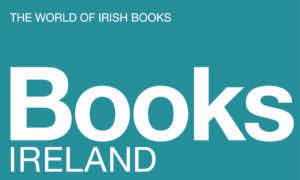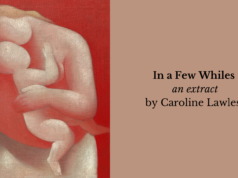
Revolutionary Times: Ireland 1913-23: The Forging of a Nation|Mike Cronin and Mark Duncan|Merrion Press
A sumptuous production and a compulsive book to dip into—Revolutionary Times
by John Kirkaldy
There have been almost as many books on Ireland in the decade 1913-1923 as bullets fired at the time. This was surely the most pivotal period in modern Irish History, with events such as the Dublin Lockout, the failure of Home Rule, World War One, the 1916 Rising, Women’s Suffrage, Partition, the Anglo-Irish Treaty and the Civil War.
Can there be anything else to be said that has not been endlessly covered from every angle? The answer, after reading with delight Revolutionary Times, is emphatically: Yes! This sumptuous production, lavishly illustrated, adds substantially to the reader’s understanding of these times. It is based on the popular RTÉ online project, Century Ireland. It was shortlisted for the Best History Book of the Year at the An Post Irish Books Award 2024. This is the kind of book that gives coffee table productions a good name.
This sumptuous production, lavishly illustrated, adds substantially to the reader’s understanding of these times
The book is a happy combination of history, chronology and social comment. Its eleven sections, one for each year, feature a wide variety of illustrations, a clear and accessible text and an awareness that life went on, even when disrupted, at an ordinary level.

The wide variety of pictures make this a compulsive book to dip into at any spare moment. There are numerous profiles of the Great and Good (and the Not So Good). There is a profusion of action shots. The Dublin Metropolitan Police (DMP) clash with striking protesters after the arrest of Jim Larkin. Patrick Pearse delivers an oration at the graveside of O’Donovan Rossa. A group of the 7th Battalion Royal Dublin Fusiliers leave for Gallipoli (how many, one wonders, made the journey back and what kind of reception did the survivors receive?)
Some of the most poignant focus on everyday life. Pictures of Dublin’s overcrowded and poverty-stricken tenements show how life was very tough for many. Surrounded by salvaged possessions, a woman stands outside the farmhouse of her widowed mother in Meelin, Co Cork, destroyed in a Black and Tan reprisal attack. There are also a wide variety of posters and cartoons, ranging from the British magazine Punch to Sinn Féin.
The book is underpinned by clear and jargon free English, outlining not only the main events but some fascinating footnotes. In 1916, gravediggers were on strike at Glasnevin Cemetery, leaving, it was claimed, 150 bodies unburied. Sport features regularly. In 1917, Wexford wins for the third time running the All-Ireland football match at Croke Park. World events are linked to Irish affairs; prominence is given to emigrants to America and Australia, especially over conscription.
In 1916, gravediggers were on strike at Glasnevin Cemetery, leaving, it was claimed, 150 bodies unburied
There are a few reminders of everyday life. In April 1915, an Irish tourist agency was founded. ‘While it is likely that tourism from America is essentially lost for the duration of the war, it is hoped to attract tourists from Britain who find themselves cut off from the continent of Europe. Ireland should prosper from the fact that it has proved immune, thus far, to Zepplin raids.’
Theatres and music halls flourished; a reserved seat for 2/6 was on sale at the Molesworth Hall to hear Mr Percy French and Miss May Laffan. Racing remained popular. In October 1916, Irish dentists were advised that they could use cocaine in their work as an anaesthetic!
In Ireland, as elsewhere, this was a crucial period in the changing role of women in society. The debate centred around the vote (not granted till 1918, aged 30, and then only on a qualifying rateable property value or if they were university graduates). Endless pleas were mounted to get Irish women to support the War effort. ‘These women are doing their bit,’ proclaimed a poster, showing a cheerful female worker in a factory, ‘learn to make munitions.’ Women were becoming more militant. Between 1912 and 1914, 22 women that were held in Irish prisons went on hunger strike. 87% of delegates to Cumann na mBann Convention on the Anglo-Irish Treaty in 1922 voted against it.
87% of delegates to Cumann na mBann Convention on the Anglo-Irish Treaty in 1922 voted against it
On almost every page, the reader is reminded of the significance of this period but also of the tragedy and emotion involved. This is an account of history often at its most raw with every side clinging to its interpretation. In April 1919, Éamon de Valera, Michael Collins and Harry Boland stand outside the Mansion House. In July 1922, another picture shows Collins’ coffin leaving Dublin’s Pro-Cathedral. (Boland was also murdered in June 1922.)
About the same time, King George V sends an address to the soldiers of the disbanded six southern Irish regiments and assures them: ‘You have thought fit to entrust your Colours to me for custody and I am very proud to take charge of them.’ In March 1923, Free State troops tied nine prisoners to a landmine at Ballyseedy, Co Kerry and blew them up; just one part of a series of attacks and reprisals during the Civil War. All sides involved have their stockpile of atrocities and justifications.
There are, of course, the pictures for the standard history books. The first Assembly of Dáil Éireann meets in January 1919. In June 1921, the six members of the Ulster Cabinet pose resolutely for the camera and posterity.
A nice touch is that each section shows how events a hundred years later have been commemorated. Although there is justifiable pride in achievement, there is also a feeling of reconciliation. In July 2014, President Michael D. Higgins attended a ceremony at Glasnevin Cemetery to commemorate Irish soldiers that fought for Britain in World War One with representatives from the Irish and British military. In August 1922, Micheál Martin, leader of Fianna Fáil, attended as a gesture of reconciliation a centenary gathering at Béal na Bláth, Co. Cork, to honour Michael Collins.
Your reviewer thought so highly of this book that it solved the Christmas present dilemma for his granddaughter, Niamh. It is his belief that it will also interest other grandparents, parents and anybody wanting to know about the development of modern Ireland.

John Kirkaldy has a PhD in Irish History, worked for many years with the Open University and has been reviewing for Books Ireland since 1980. He has contributed to three Irish history anthologies, a school textbook, and has been involved in a number of Open University History documentary series. Aged 70, six years ago, he went round the world on a much delayed gap year described in his book, I’ve Got a Metal Knee: a 70-Year Old’s Gap Year. His latest book Life—A Fifty Fifty Path? is about luck and chance in history.











